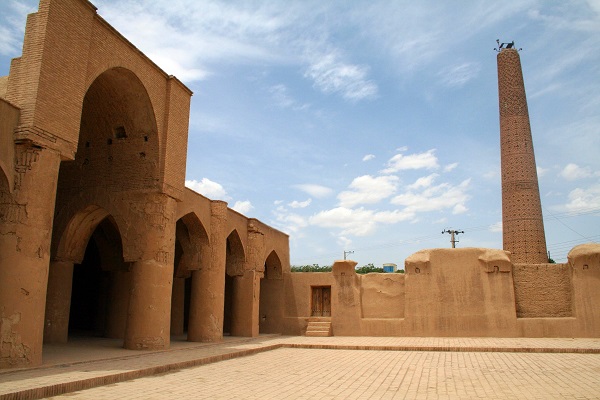Iran Seeks Old Mosque’s Inclusion in ICESCO’s IWHL


“We assign a high priority to Tarikhaneh Mosque of Damghan to become registered on the ICESCO’s Islamic World Heritage List (IWHL),” provincial tourism chief Hamidreza Doustmohammadi said on Tuesday.
The mudbrick mosque is located near the modern city of Damghan in Semnan province. Some sources including the ArchNet, a collaborative digital humanities project focused on Islamic architecture, say that the Tarikhaneh is the oldest existing mosque in the country.
Also called Tarik Khana, the monument incorporates a simple Arab plan with Sassanian construction techniques. An arcade lines the central courtyard, a single bay deep on all but the qibla side where it increases to three bays. The central aisle on the qibla arcade is wider and taller than the others, a form that presciently indicates the later ubiquitous monumental axis of Persian architecture.
The arcades, recalling Sassanian precedents, are formed of fired brick arches, elliptical and sometimes slightly pointed, and massive circular brick piers.
Standing together at a distance from the mosque are the remains of a square minaret of uncertain date, possibly part of the original construction period, and a cylindrical minaret from the Seljuk period (1060-1307). The latter is strikingly divided into six zones of ornamentation, each rendered in brick with a different geometric pattern.
The prayer hall of a mosque is where the rich and poor, prominent and ordinary people, all stand and bow together in the same rows. Women may participate in the prayers, but they must occupy a separate space or chamber in the mosque. No statues, ritual objects, or pictures are used in mosques. The only decorations permitted are inscriptions of Quranic verses and the names of Prophet Muhammad (PBUH) and his companions.
The Islamic World Educational, Scientific and Cultural Organization (ICESCO, formerly ISESCO) is a specialized organization that operates under the aegis of the Organization of Islamic Cooperation (OIC) and is concerned with fields of education, science, culture and communication in Islamic countries to support and strengthen relations among the member states.
Headquartered in Rabat, Morocco, ICESCO was founded by the Organization of Islamic Cooperation (OIC) in May 1979. It has 54 member states.
Initiative to support cultural heritage
Last year, the Islamic World Educational, Scientific and Cultural Organization started publishing sets of video clips on cultural heritage topics, as part of its “ICESCO Digital Heritage” Initiative and “Distance Culture” Program.
The initiative seeks to remotely train and build the capacities of the staff working in heritage fields and ensure the public’s benefit therefrom and it is aimed to cover goals such as the general principles of the documentation of intangible heritage and national inventories; museum management in the Islamic world; documentation of cultural heritage; and management of risks, crises, and disasters in heritage sites and museums.
Techniques of inscribing heritage sites and landmarks on the Islamic World Heritage List (IWHL) and the World Heritage List (WHL); rehabilitation of endangered handicrafts; and protection of underwater cultural heritage are amongst other goals the organization pursues.
According to ICESCO, these programs is expected to form part of its efforts to support the member states and their competent authorities in the fight against coronavirus (COVID-19) and find alternative solutions to ensure the sustainability of their educational, scientific and cultural undertakings during this “difficult period”.
Source: Tehran Times



